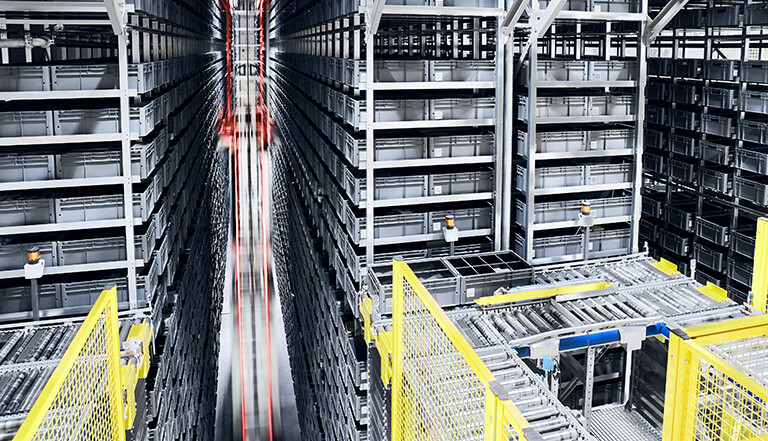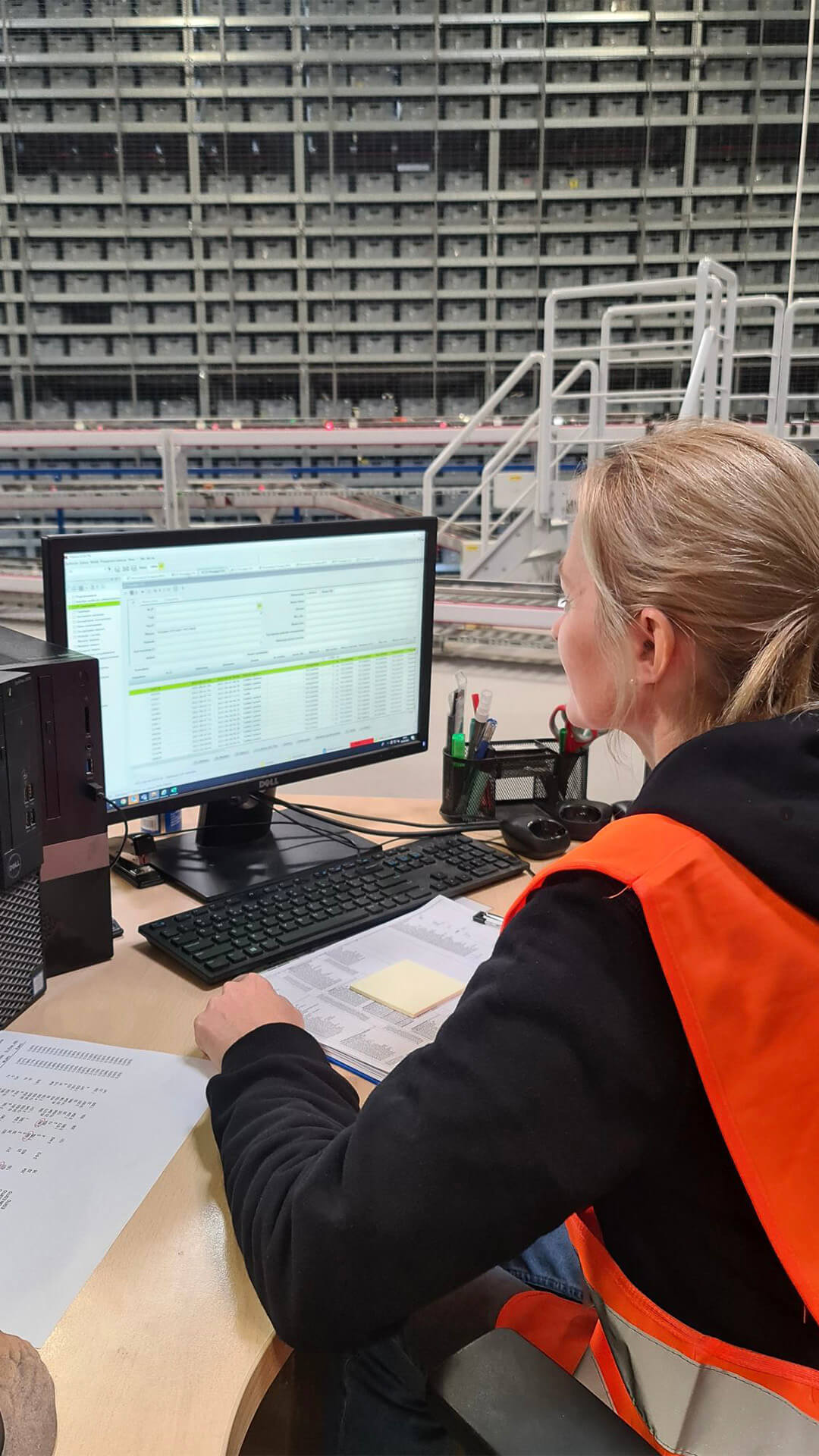What are the main functions of a WMS system?
The main functions of a warehouse management system (WMS) include a wide range of activities necessary for effective control of logistics and warehouse processes, including e-commerce logistics. Automation and WMS software support logistics management by integrating with other systems such as ERP or e-commerce platforms. Within the functions of the WMS system, it is possible to monitor the location of goods in the warehouse, WMS controls the flow of goods, order picking, inventory and stock control. The implementation of the WMS system can also include the management of high-bay warehousing, integrated with barcodes and labels on shelves. A modern WMS warehouse system is flexible and allows real-time data exchange, which facilitates both goods receipts, storage, and shipping processes. In this way, the warehouse control system allows optimization of operations and production, as well as integration with e-commerce logistics processes. By implementing the WMS system, it is possible to effectively control the warehouse, which is crucial especially in the context of the growing importance of e-commerce logistics and the need to optimize costs.
Is a Warehouse Management System (WMS) suitable for your e-commerce business?
If you run an e-commerce logistics business, considering implementing a WMS system to manage warehouse operations may be key to your company's efficiency. The WMS program manages product traffic, allows for precise location, efficient order fulfillment, and product release. With the WMS class warehouse software, handling warehouse processes and inventory becomes much simpler and more efficient. The features that such a system can offer include inventory control, delivery monitoring and process optimization. The efficiency of e-commerce business relies heavily on smooth logistics, made possible by the support of appropriate IT solutions. The use of a WMS system is a solution for companies that focus on building a competitive advantage through logistics while optimizing costs.
How much does a WMS system cost?
The cost of purchasing a WMS class system varies greatly and depends on many factors, such as the size and type of company, amount of product storage, required level of interface customization, or number of terminals on which the WMS warehouse software is to be installed. The price can range from tens of thousands to even several million PLN depending on whether the warehouse performs manual processes or advanced warehouse automation. When deciding to implement a warehouse management system, it should be remembered that the costs do not end with a one-time payment for WMS software. It is also worth taking into account the costs of service, staff training, as well as regular updates that are necessary to keep the system up to date with dynamically changing business requirements and technologies. When analyzing the cost of implementing an IT warehouse system, temporary solutions that are supposed to compensate for missing functions and lost benefits should also be taken into account.
How to choose a WMS class system that best suits your business? What criteria will be key?
In the age of the dynamically developing e-commerce and logistics market, the right choice of WMS system plays a key role. The WMS system affects the functioning, financial situation and customer relations, so it is one of the key decisions related to managing the company. Contrary to appearances, this is not an easy task. First of all, you need to understand what a WMS system is and what it is for. It is software designed for comprehensive management of warehouse processes - from receiving goods, through picking and shipping orders, to inventory control. It is crucial to match the functionality of the WMS system to the specifics of the company's operations, industry and business model. In addition, factors such as system scalability, ability to integrate with other IT solutions, and ease of use are important. The right choice of WMS system will maximize warehouse operational efficiency and optimize logistics costs.
How long does the implementation and integration of the WMS program take?
Implementing the WMS program to manage the warehouse is not a short-term process. It all depends on the size and complexity of the company's operations. In this case, the WMS system allows comprehensive control of warehouse operations, and its installation requires careful planning. First of all, an in-depth analysis of warehouse processes and procedures is necessary. Then the WMS system must be properly configured and integrated with existing software. The installation process itself usually takes 3 to 6 months. However, full utilization of the capabilities of a modern WMS system often requires modification of procedures and optimization of work. Therefore, the entire installation and integration project with the existing infrastructure should be treated as part of a long-term warehouse administration improvement strategy.
What distinguishes the WMS warehouse program from ERP?
The WMS system, or Warehouse Management System, differs significantly from the ERP system. WMS is dedicated specifically to comprehensively controlling warehouse processes - from receiving goods, through order picking and shipping, to controlling warehouse stocks. Thanks to WMS, it is possible to efficiently organize the warehouse space, automation of processes or integration with devices (e.g. barcode readers). On the other hand, the ERP system is used to control the entire company - it combines many departments, such as finance, accounting, HR or logistics. So WMS is a tool specialized in optimizing operations in the warehouse, while ERP serves as an integrating function for different areas of the company.
How does the WMS IT warehouse system support the process of receiving goods, locating, identifying and picking?
The WMS IT warehouse system significantly supports and speeds up the order picking process. The WMS program has a number of features that facilitate this process. First of all, the system allows automatic grouping of orders by priorities and picking criteria. This allows optimal planning of the order fulfillment sequence. In addition, the WMS warehouse management program controls inventory levels and product locations, which streamlines the product collection process. The system also suggests the shortest picking routes, eliminating unnecessary moving of employees. Additionally, integration with barcode readers significantly speeds up operations. As a result, the order picking process is more efficient and faster.
What benefits does WMS implementation bring?
Implementing an advanced WMS system brings many benefits to the company. First of all, WMS can significantly increase the efficiency and productivity of warehouse operations. By automating many processes, such as order picking and location management, the order processing time is significantly reduced. The WMS system also improves the flow of information and eliminates errors resulting from manual data entry. In addition, real-time reporting allows better control of warehouse stocks and more accurate logistics decisions. As a result, this leads to increased company profitability and improved customer service. An advanced WMS is definitely a worthwhile investment.
How does inventory work in the WMS system and what impact does it have on warehouse stocks?
Inventory in the warehouse management system (WMS) plays a key role in e-commerce logistics. Thanks to the use of WMS, companies can effectively handle high-bay warehousing and monitor zones and resources in real time. A WMS program that supports management processes is essential to maintain inventory accuracy and control. With the help of the WMS system, warehouse managers have the ability to continuously track and analyze inventory, which in turn allows process optimization and cost reduction. The system handles tasks related to periodic inventory (by area or item) or continuous. The inventory strategy can be defined for different storage locations or items.
How does the operation of issuing goods proceed in the WMS system?
In warehouse management, issuing goods is one of the key warehouse operations, in which the WMS system plays an important role. Thanks to the use of WMS software, this process becomes more efficient and automated. The WMS system analyzes product turnover, controls and optimizes all stages, from locating the product to its picking and shipping. Thanks to the use of WMS, operations performed in the warehouse become simpler and more transparent. The WMS system often allows establishing product batch reservation and issuance strategies according to FIFO, LIFO, FEFO, expiration date, product serial number or batch principles through the product batch control module. It is possible to prioritize full or incomplete units, taking into account the availability of automation or its load. With the help of the WMS system, you can also track the history of the order. The WMS warehouse management software also supports integration with other supply chain management tools. The implementation of processes related to the handling of product issuance through the WMS system is significantly streamlined.



